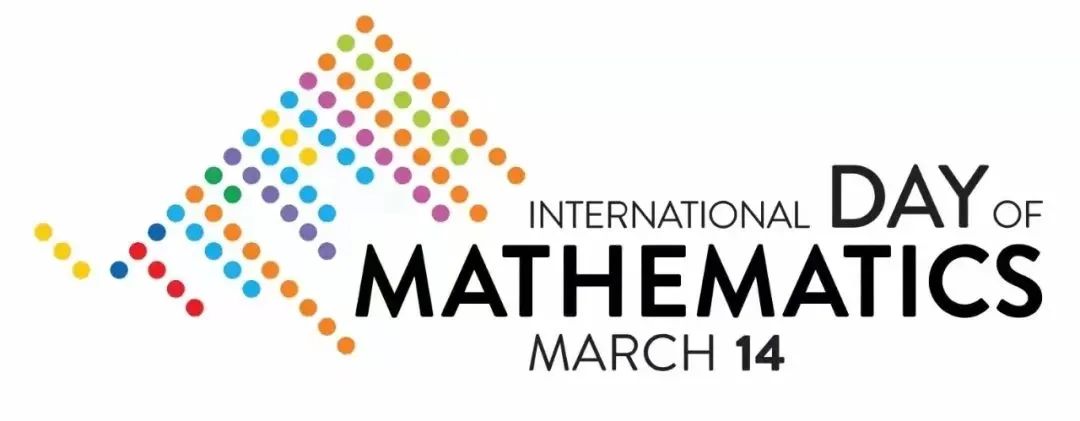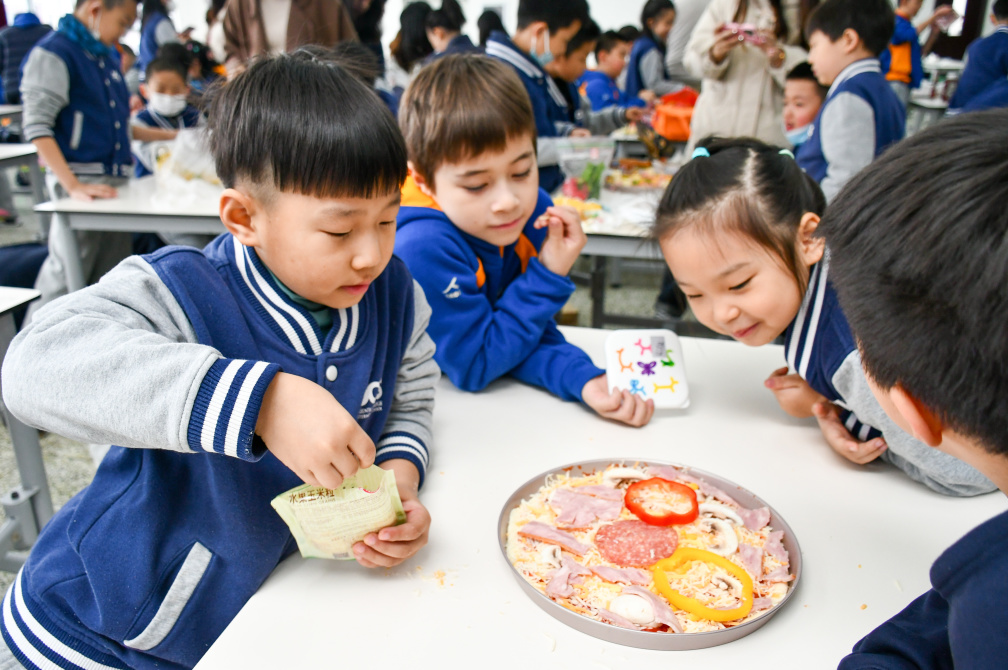01
数学&生活——派的制作与分享
Math&Life - The Making and Sharing of Pie
流行的庆祝Pi Day的方式有很多,当然,吃派绝对榜上有名。这不,OCIS的同学们就自己动手制作美味的派,体会劳动快乐的同时,动手能力拉满!
There are many popular ways to celebrate Pi Day. Eating pizza is high on the list. OCIS students all make delicious pizzas, experiencing the joy of labor and full hands-on fun!

✓
Pi DAY 3.14
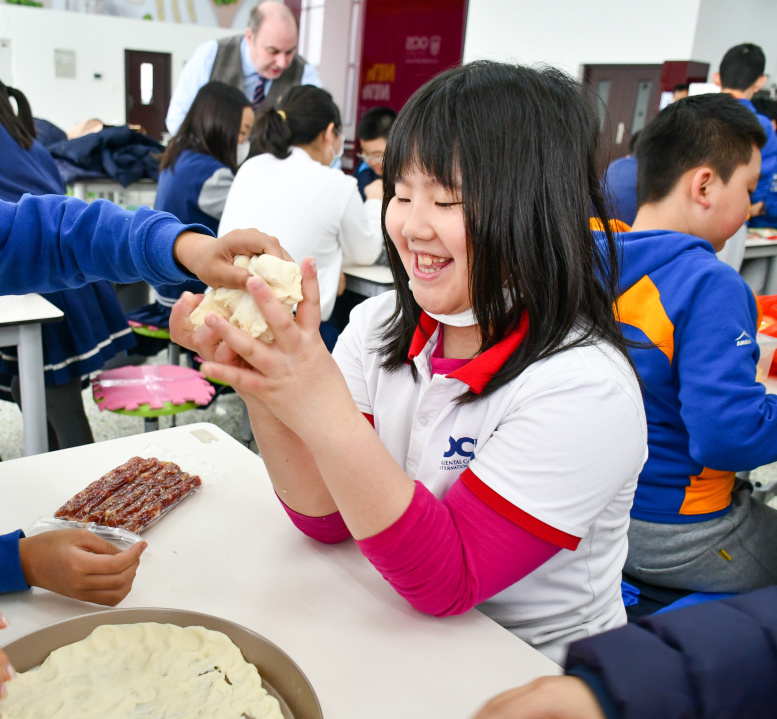
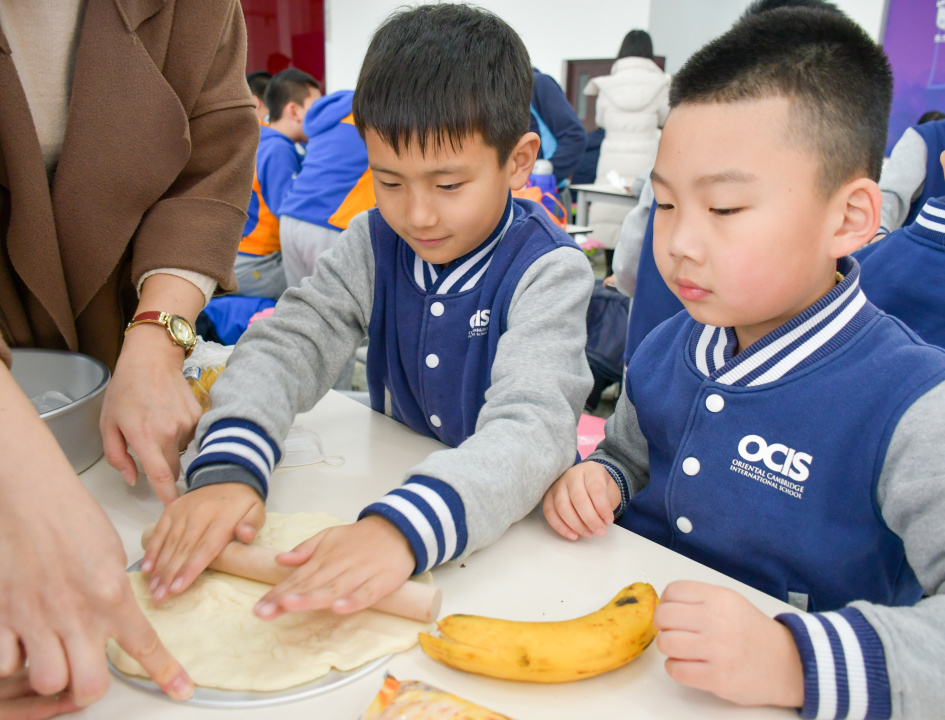

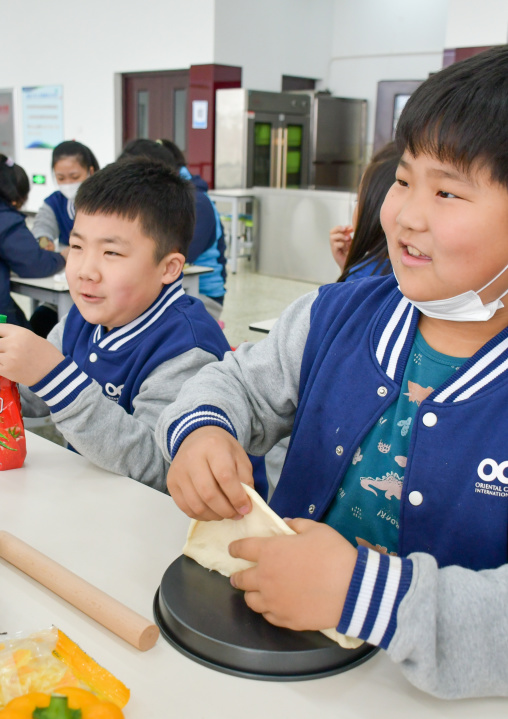
/////////
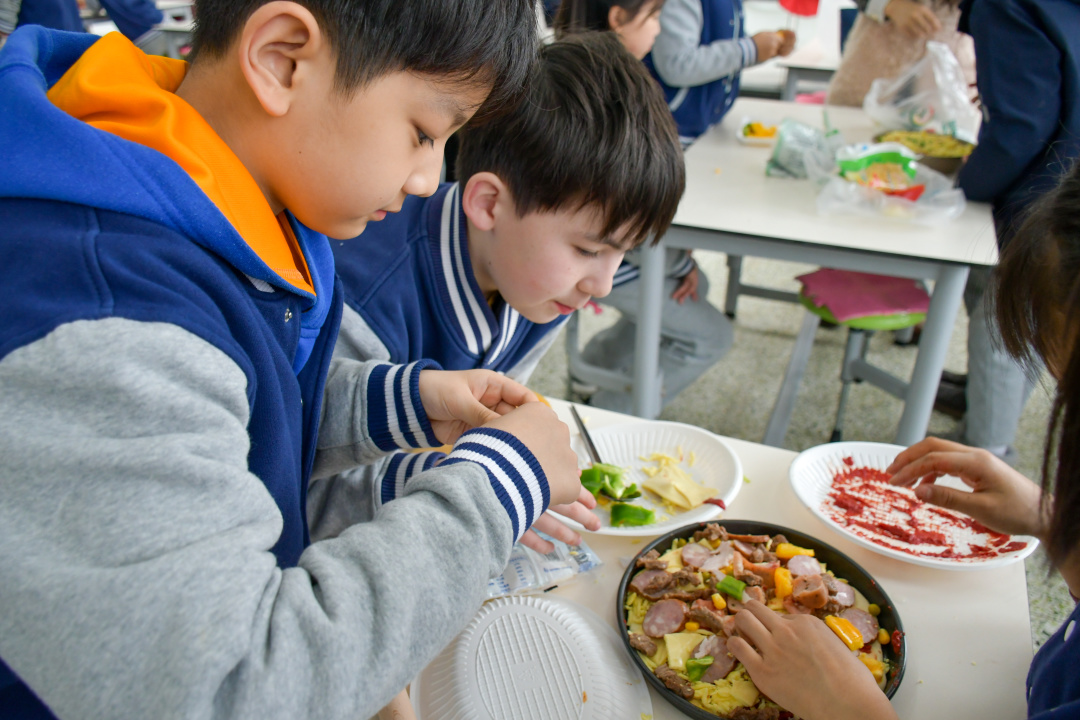


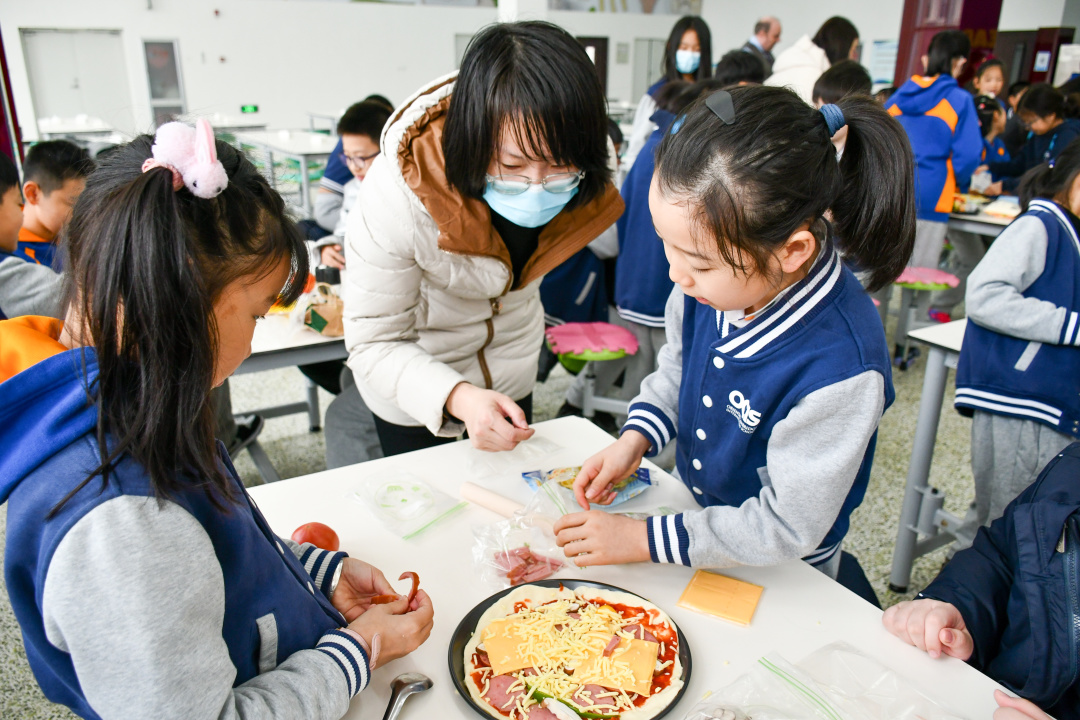
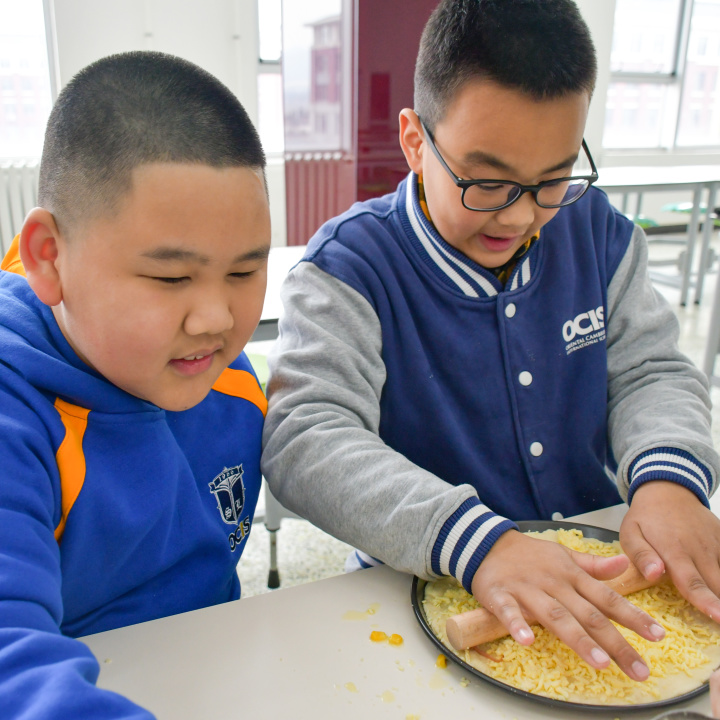
OCIS Pi Day
2023.3.14


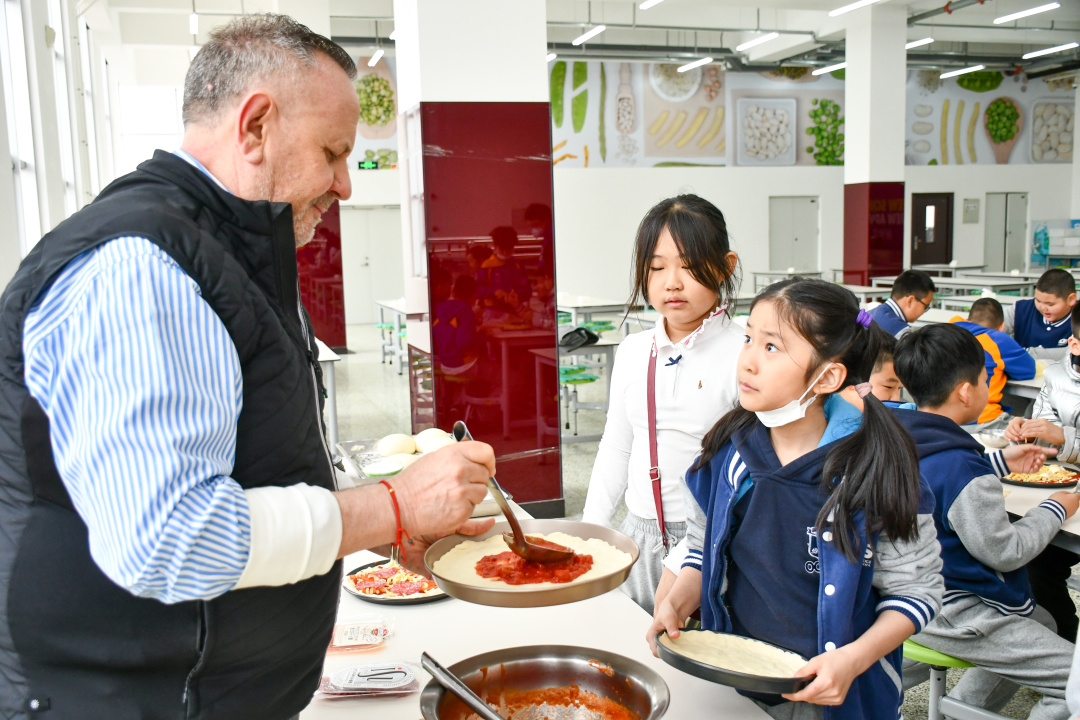

✓
Pi DAY 3.14
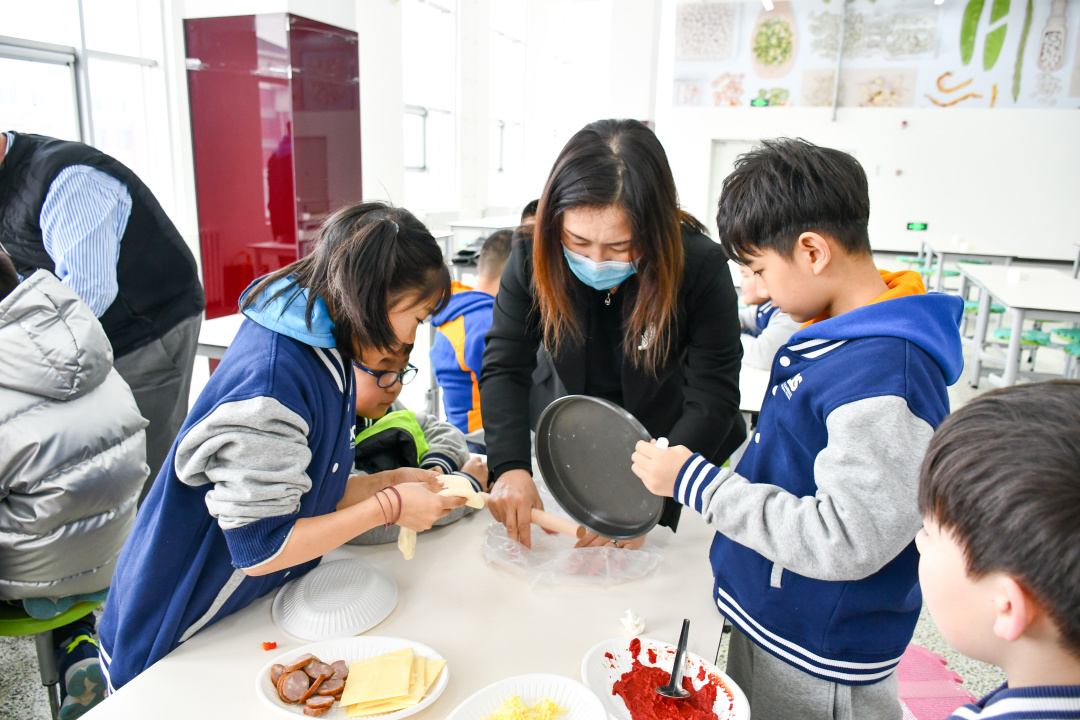
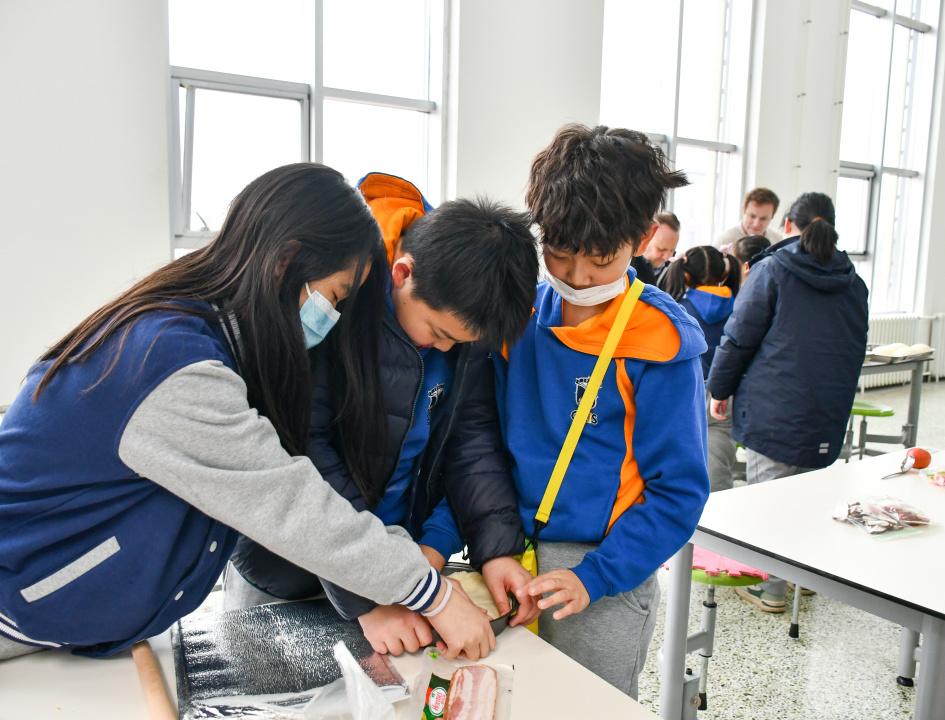
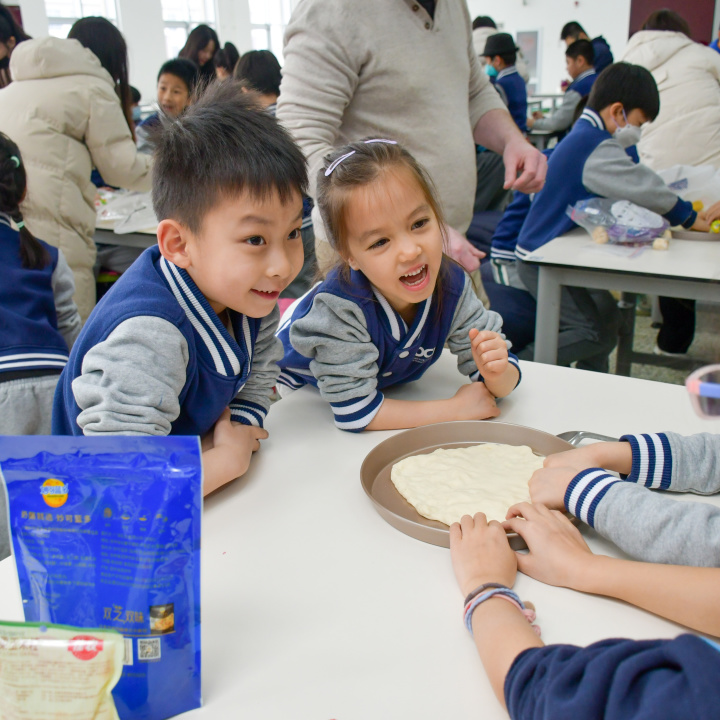
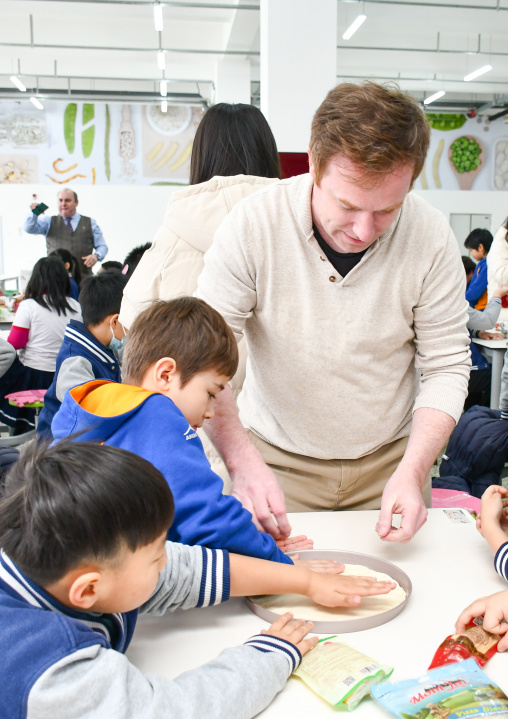
/////////

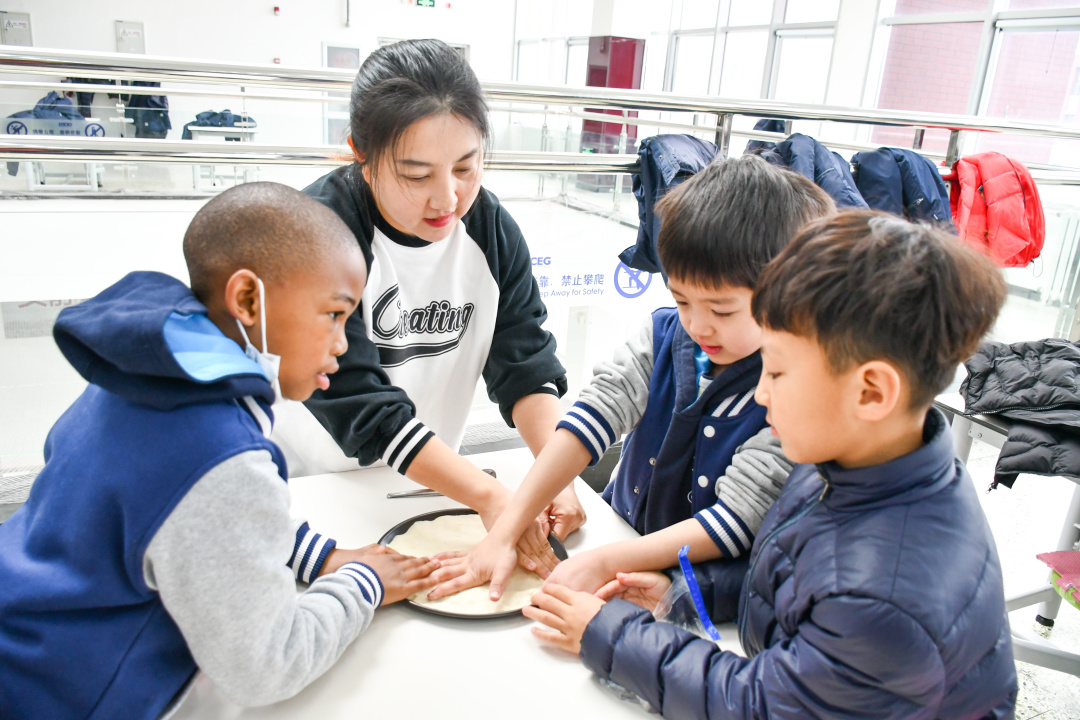
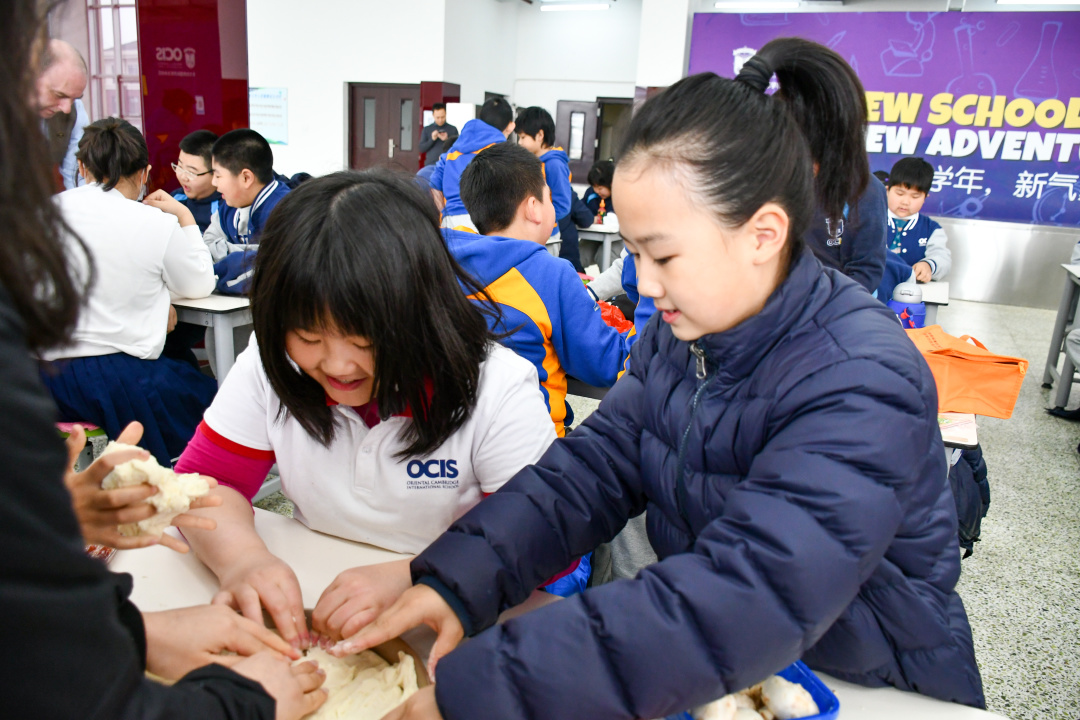
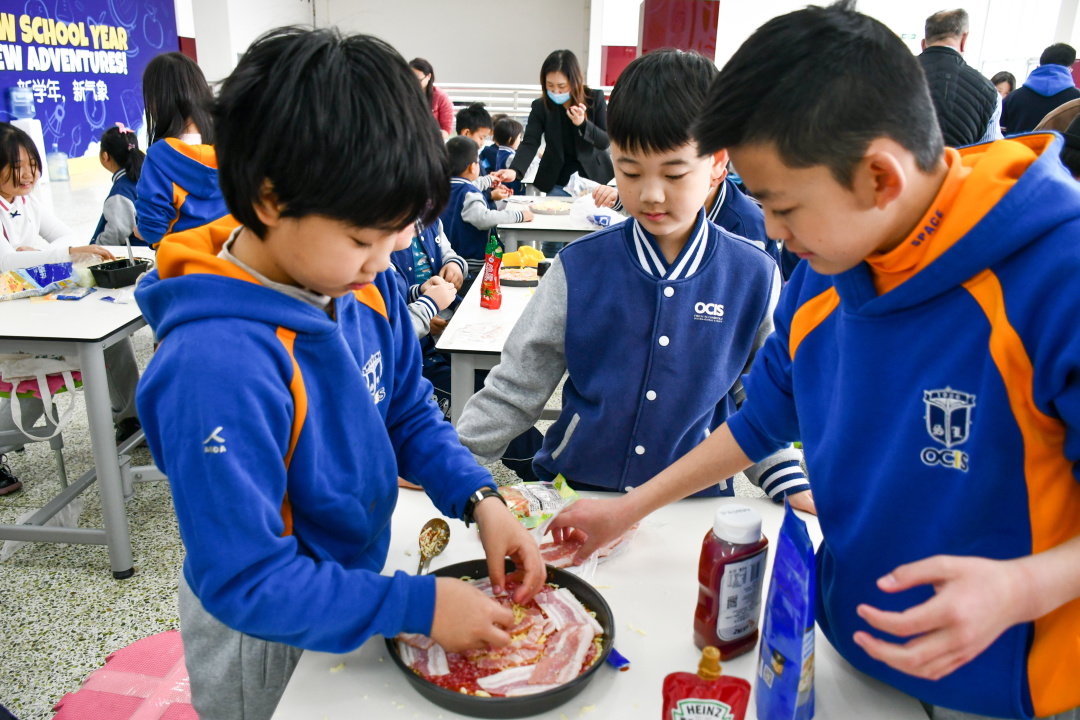

OCIS Pi Day
2023.3.14

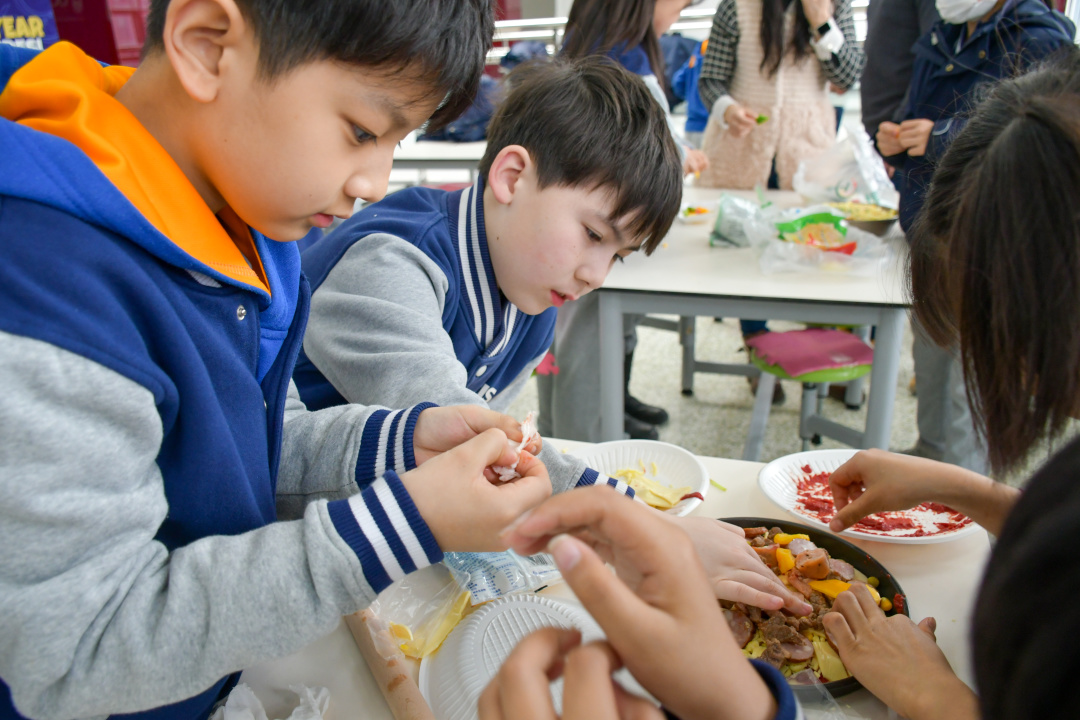
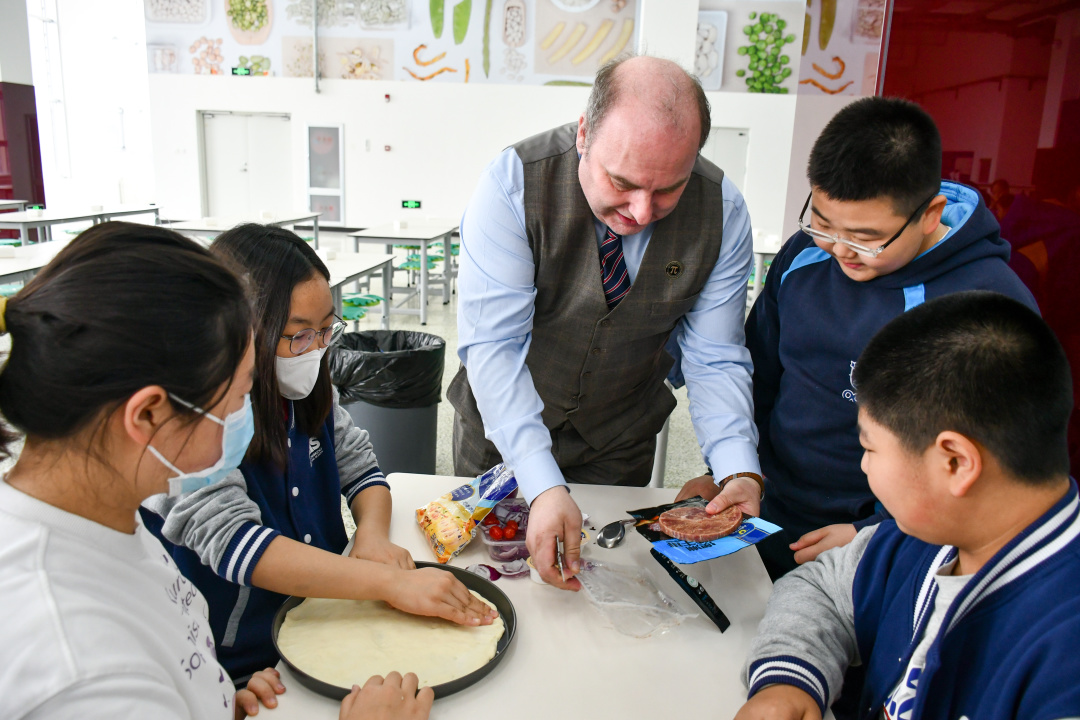

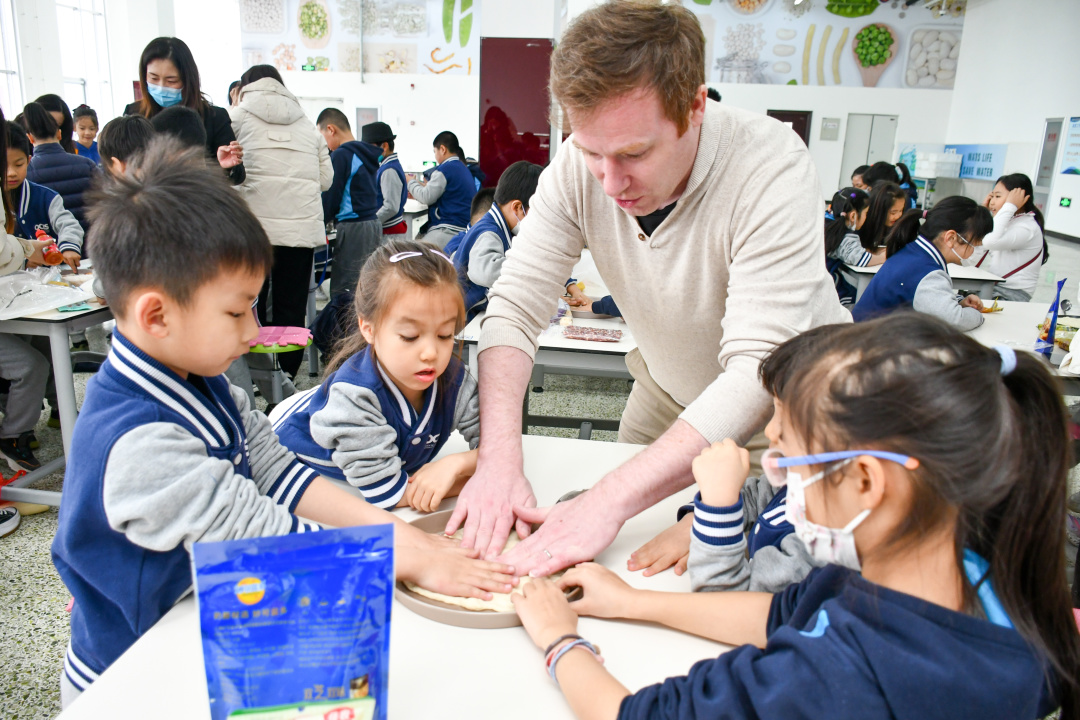
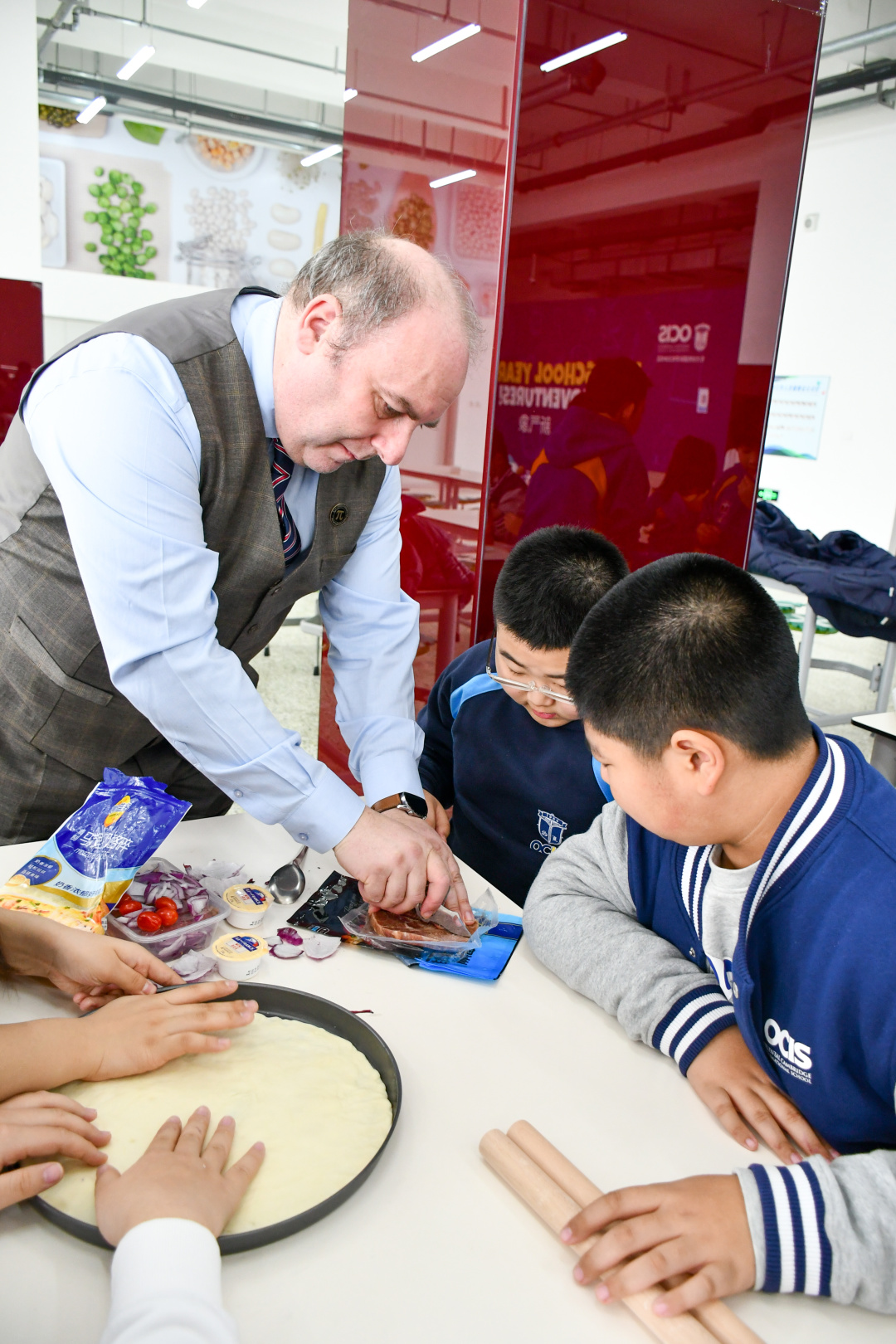
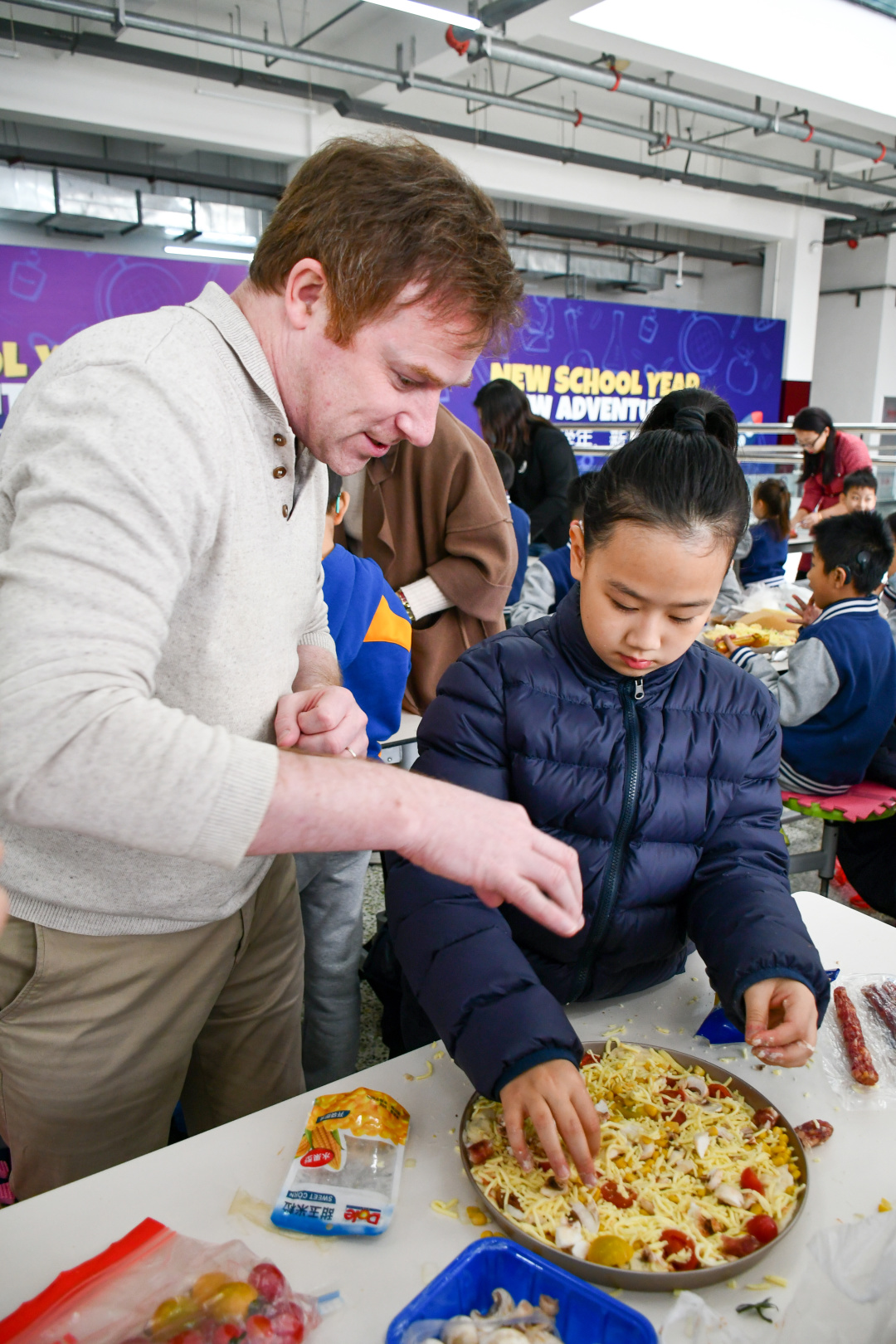



/////////
02
圆周率小常识
Facts of pi
吃过玩过,当然也不能忘记Pi Day真正的意义,下面让我们一起认真的学习下圆周率小常识吧。
After eating and playing, of course, we can't forget the true meaning of Pi Day. Now let's learn some facts of pi.

圆周率是什么?
What is pi?
圆周率(希腊字母π)是一个用在数学中的符号,代表一个常数——圆的周长与直径的比值,数值大约是3.14159。
Pi (the Greek letter π) is a symbol used in mathematics, representing a constant - the ratio of the circumference to the diameter of a circle, which is about 3.14159.

OCIS Pi Day
2023.3.14




它是一个常数,这意味着所有圆的圆周率都是一样的。它还是一个无理数,这意味着小数点后面的数字永远不会终止或循环。
It is a constant, which means that the pi of all circles is the same. It is also an irrational number, which means that the number after the decimal point will never end or cycle.

圆周率的由来
Origin of pi
我们在求圆的周长、面积和球的体积时需要用到一个常数π,这就是圆周率。圆周率是个无理数,用任何有限的数来作为圆周率的值,都只能是近似的。我国古人最初从经验中得知要用3来作圆周率的值,即所谓的“径一周三”。后来,人们在长期的实践中发现不是“径一周三”,而是“圆径一而圆周三有余”,但究竟余多少,却无人得出准确的数字。
When we calculate the circumference, area and volume of a circle, we need to use a constant π, which is pi. Pi is an irrational number. It is only approximate to use any finite number as the value of Pi. The ancient Chinese learned from experience that they should use 3 as the value of pi, so was the saying "radius one circumference three". Later, in long-term practice, people found that it was not "radius one circumference three", but "radius one circumference three and more". However, there was no accurate figure of how much.



/////////
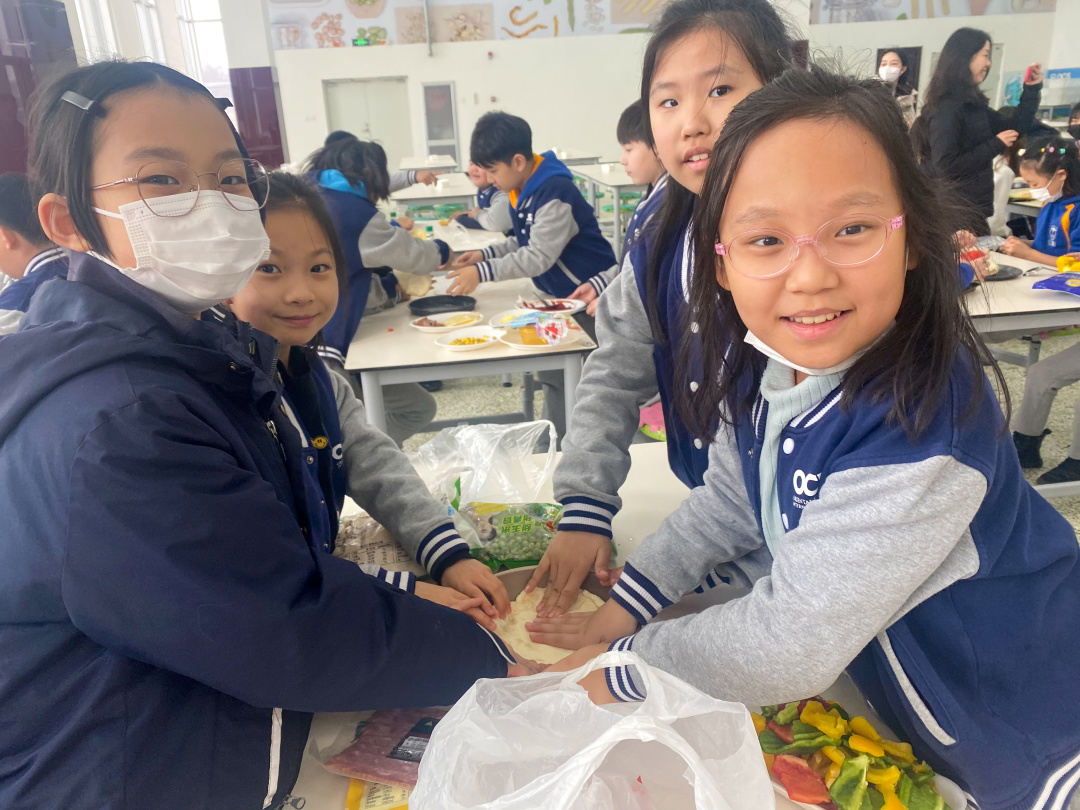
到了三国末期,对圆周率的研究进入了一个新的阶段,数学家刘徽在研究容器的容积和注解《九章算术》的基础上创造了用割圆术来计算圆周率数值的科学方法。割圆术的发明,是我国数学史上的一大成就,用这种方法得出的圆周率的数值是3.141024,刘徽又把π=3.14用几何法化为157/50,后人把π=157/50称作“徽率”。
At the end of the Three Kingdoms period, the study of pi entered a new stage. The mathematician Liu Hui created a scientific method to calculate the value of pi by using “circle cutting” on the basis of studying the volume of the container and commenting on "Nine Chapters of Arithmetic". The invention of circle cutting is a great achievement in the history of mathematics in China. The value of pi obtained by this method is 3.141024. Liu Hui changed π=3.14 to 157/50 by geometric method. Later generations called π=157/50 "Hui".

✓
Pi DAY 3.14


OCIS Pi Day
2023.3.14
接下来的南北朝时代,祖冲之为了天文历法上的推算和考量度量衡的需要,对圆周率做了进一步的研究。他认为刘徽计算出来的圆周率的值也不是很准确,于是就继承了刘徽割圆术这种求圆周率的科学方法,并在此基础上继续推求。
In the following Southern and Northern Dynasties, Zu Chongzhi made further research on pi for the purpose of calculating the astronomical calendar and considering the need of weights and measures. He believed that the value of pi calculated by Liu Hui was not very accurate, so he inherited the scientific method of calculating pi by Liu Hui's circular cutting technique and continued to calculate it on this basis.

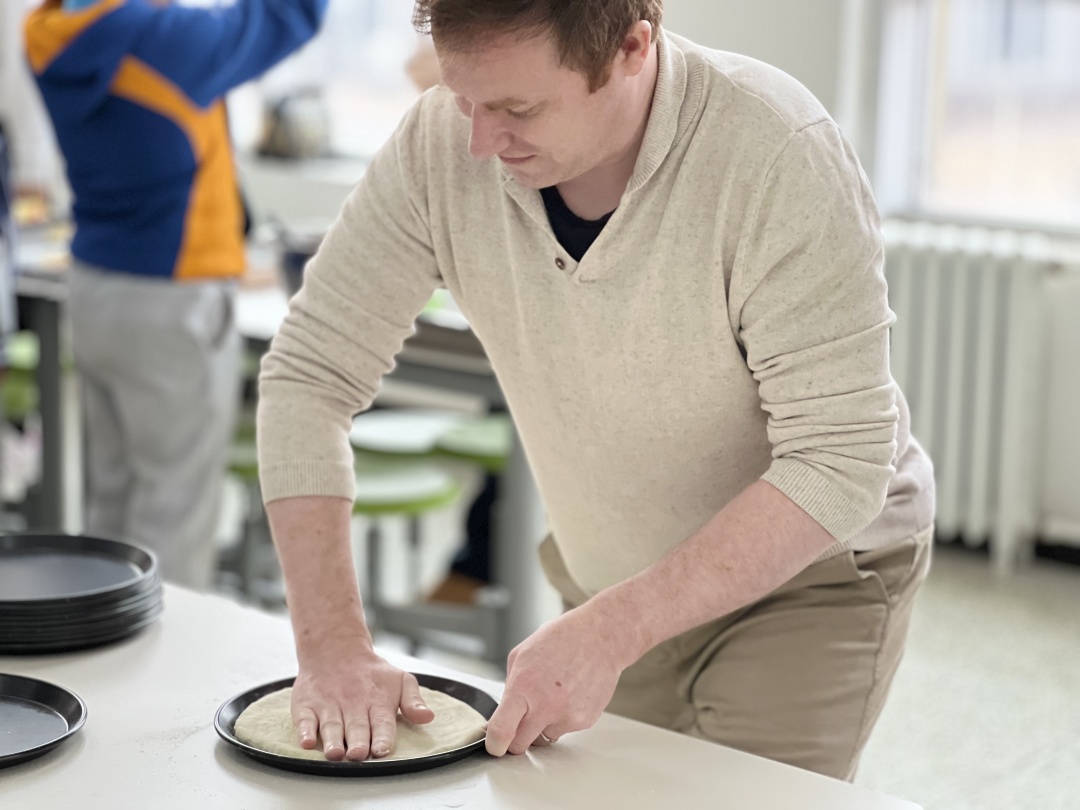

祖冲之是世界上第一个把圆周率的值推算到小数点以后第七位数字的人,这一数值,一千年后才由德国人奥托和荷兰人安托尼兹重新得到。可是,这一成果后来却被误认为是安托尼兹首先求出的,因而将其称为“安托尼兹率”。日本数学史家三上义夫主张应将这一数值改称为“祖率”,将荣誉还给中国古代这位伟大的数学家。此外,直到15世纪初,阿拉伯数学家卡西才求得圆周率的17位精确小数值,从而打破了祖冲之保持近千年的纪录。
Zu Chongzhi was the first person in the world to calculate the value of pi to the seventh digit after the decimal point. This value was regained by Otto, a German, and Anthonisz, a Dutch, a thousand years later. However, this result was later mistakenly regarded as the first result of Anthonisz, so it was called "Anthonisz rate". Japanese mathematical historian Yoshio Mikami) advocated that this value should be renamed "Zu" and the honor should be returned to the great mathematician in ancient China. In addition, it was not until the beginning of the 15th century that the Arab mathematician Cassie obtained the 17 accurate decimal values of pi, thus breaking Zu Chongzhi’s nearly a thousand years record.
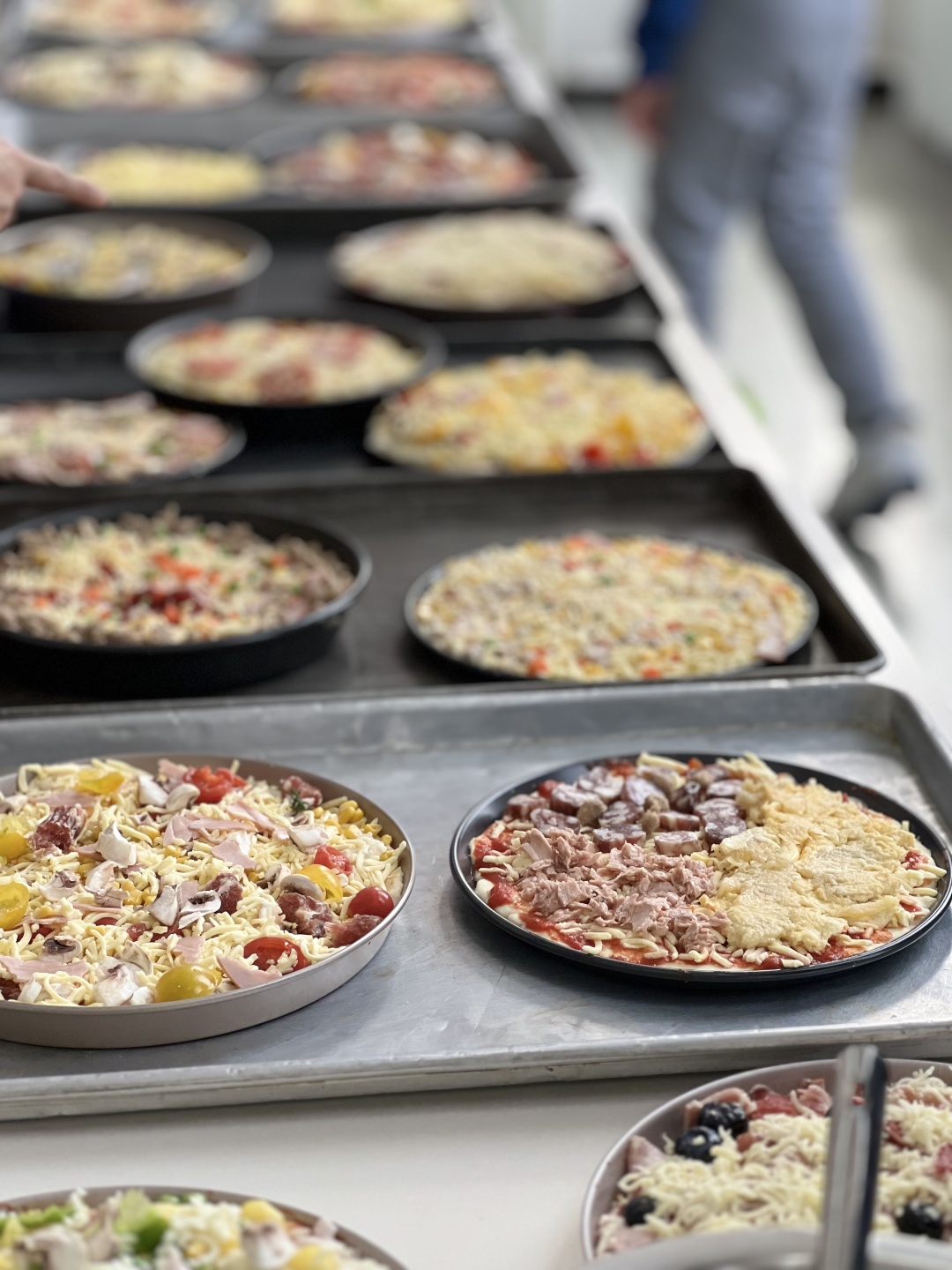


数学月的活动还未结束,我们还会陆续组织中英文数学知识竞赛等活动,我们希望,从设计到制作再到竞赛,既有对数学知识的学习与运用,也有对数学这一学科的思考与表达,从而形成一个完美的学习闭环,让我们一起期待吧!
The activity of Math Month is not over yet. We will continue to organize Chinese and English Math Knowledge Contest and other activities. We hope that from design to production to competition, there will be both learning and application of mathematical knowledge and thinking and expression of mathematics, so as to form a perfect learning loop. Please stay tuned for more.
